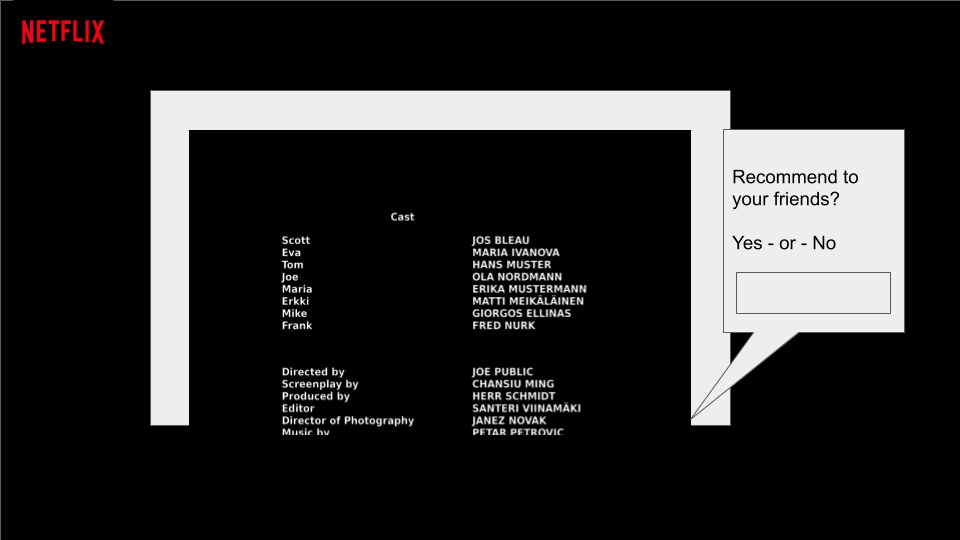Netflix Decision Paralysis
Design Focus and Problem Space 🚀
We are all familiar with the all-too-common problem of Netflix Decision Paralysis. Imagine it’s a Friday night and your roommates and you have decided to spend the night in and watch a good movie together. Good thing you’re dad is still paying for your Netflix membership right? As you all sit down, grab your popcorn, and put Netflix on the TV, someone asks the traumatizing question: “What should we watch?”. Thus begins Netflix Decision Paralysis, where 30+ minutes are spent debating movies vs. TV shows, genres, and actors. By the time some semblance of a decision is made, it’s already 10 p.m. and everyone decides it’s time for bed.
In this study, we are going to dig deeper into Netflix recommendation and understand why decision-making is so hard on the platform. Netflix, the industry standard for entertainment streaming, has over 167.1 million subscribers worldwide, of which 61 million are based in the US. We will consider our primary user for this study an 18-34 year old US-based millenial/Gen-Z, who make up about 45% of all US viewers.
Target User:
The subject for this study is a 23 year old male who occasionally uses streaming services such as Netflix, Hulu, Amazon Prime, etc. He is an effective user for this study because he does not watch a tremendous amount of Netflix TV, meaning he does not have a very extensive knowledge on the possible titles that are present within Netflix.
Contextual Inquiry 🔎
The contextual inquiry phase involved 2 different tasks that were all related to navigating the Netlifx UI. The first task is based on finding a piece of content given a genre of interest. The second task, on the other hand, is more open-ended. The goal of this second task is to highlight how a Netflix user navigates the platform when they don't have a specific idea of what they want to watch.
Task 1: Find a comedy show
The subject noted that they used the top tabs of Netflix and the organized rows to make decisions when given a specific decision based on genre. Upon navigating to a focused set of shows that are comedy, however, the decsion making process becomes a bit more arbitrary. A key takeaway here is that Netflix does a good job at segmenting content based on some categroization, but choosing something to watch from that narrowed list is still quite a challenge.
Task 2: Find a show you'd actively consider watching right now
The purpose of this task was identify the struggle of making a decision on Netflix without any prior agenda about what you want to watch. The most important takeaway here was the the subject felt that more often than not they would get frustrated of searching for a title to watch and end up switching to a different platform to explore other options.
Sequential Models 🚶♂️
The 2 sequential models below represent the sequential flow by which the subject navigated the above tasks. The start of the task is denoted in black, each consecutive step is denoted in blue, and the breakdowns are denoted in red.


Key Takeaways
From the contextual inquiry phase, we can deduce 3 main takeaways:
- User has a relatively short attention span when it comes to choosing a title on Netflix
- Netflix recommendations are fine, but users value recommendations from their friends much more
- Netflix has no social component to it, making in-app sharing not possible
Paper-based Prototype 🔨
Using Google Slides, I designed a low-fidelity prototype that attempts to address the key takeaways from the contextual inquiry. The primary improvement stems from an added social component to the user experience. The goal is that users can make watching decisions based on what their friends are watching and they can recommend media to their friends as well.



Prototype Evaluation 🎈
Evaluation Summary
The subject seemed to enjoy the newly added "social component" to the Netflix user experience. Having recommendations from friends help address the primary breakdown found during the contextual inquiry i.e. people struggle to choose a show to watch on their own and rely on friends' suggestions when deciding what to watch.